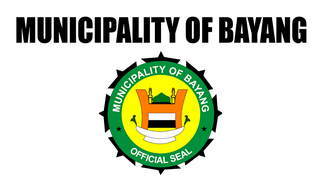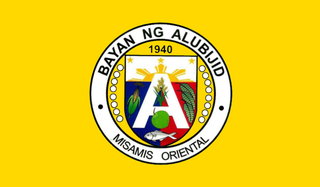
Marawi, officially the Islamic City of Marawi, is a 4th class component city and capital of the province of Lanao del Sur, Philippines. According to the 2020 census, it has a population of 207,010 people.

Ganassi, officially the Municipality of Ganassi, is a 4th class municipality in the province of Lanao del Sur, Philippines. According to the 2020 census, it has a population of 30,802 people.

Ayungon, officially the Municipality of Ayungon, is a 2nd class municipality in the province of Negros Oriental, Philippines. According to the 2020 census, it has a population of 47,102 people.

Balabagan, officially the Municipality of Balabagan, is a 4th class municipality in the province of Lanao del Sur, Philippines. According to the 2020 census, it has a population of 29,863 people.

Balindong, officially the Municipality of Balindong, is a 4th class municipality in the province of Lanao del Sur, Philippines. According to the 2020 census, it has a population of 32,573 people.

Bayang, officially the Municipality of Bayang, is a 5th class municipality in the province of Lanao del Sur, Philippines. According to the 2020 census, it has a population of 28,023 people.

Malabang, officially the Municipality of Malabang, is a 3rd class municipality in the province of Lanao del Sur, Philippines. According to the 2020 census, it has a population of 49,088 people. The town is one of the two former capitals of the Sultanate of Maguindanao from 1515 until the Spanish conquered the land in 1888.

Piagapo, officially the Municipality of Piagapo, is a 4th class municipality in the province of Lanao del Sur, Philippines. According to the 2020 census, it has a population of 30,132 people.

Saguiaran, officially the Municipality of Saguiaran, is a 4th class municipality in the province of Lanao del Sur, Philippines. According to the 2020 census, it has a population of 26,712 people.

M'lang, officially the Municipality of M'lang, is a 1st class municipality in the province of Cotabato, Philippines. According to the 2020 census, it has a population of 98,195 people.

Balangkayan, officially the Municipality of Balangkayan, is a 5th class municipality in the province of Eastern Samar, Philippines. According to the 2020 census, it has a population of 10,185 people.

Guimbal, officially the Municipality of Guimbal, is a 4th class municipality in the province of Iloilo, Philippines. According to the 2020 census, it has a population of 35,022 people.

Balo-i, officially the Municipality of Balo-i, is a 3rd class municipality in the province of Lanao del Norte, Philippines. According to the 2020 census, it has a population of 68,465 people.

Matungao, officially the Municipality of Matungao, is a 5th class municipality in the province of Lanao del Norte, Philippines. According to the 2020 census, it has a population of 14,756 people.

Pantar, officially the Municipality of Pantar, is a 5th class municipality in the province of Lanao del Norte, Philippines. According to the 2020 census, it has a population of 26,599 people.

Pantao Ragat, officially the Municipality of Pantao Ragat, is a 4th class municipality in the province of Lanao del Norte, Philippines. According to the 2020 census, it has a population of 30,247 people.

Poona Piagapo, officially the Municipality of Poona Piagapo, is a 4th class municipality in the province of Lanao del Norte, Philippines. According to the 2020 census, it has a population of 29,183 people.

Tangcal, officially the Municipality of Tangcal, is a 5th class municipality in the province of Lanao del Norte, Philippines. According to the 2020 census, it has a population of 16,075 people.

Alubijid, officially the Municipality of Alubijid, is a 4th class municipality in the province of Misamis Oriental, Philippines. According to the 2020 census, it has a population of 32,163 people.

Jaro, officially the Municipality of Jaro, is a 3rd class municipality in the province of Leyte, Philippines. According to the 2020 census, it has a population of 43,758 people.
























